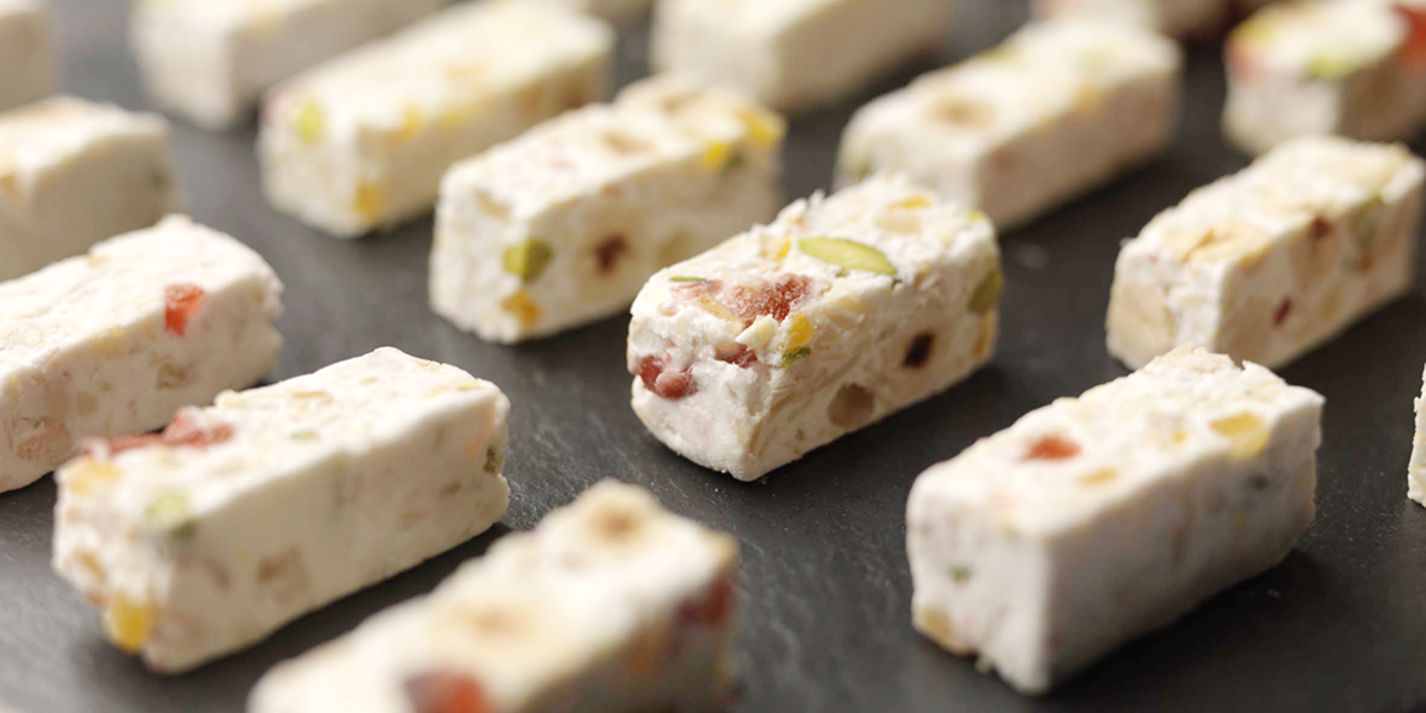Nougat
Nougat is a family of confections made with sugar or honey, roasted nuts (almonds, walnuts, pistachios, hazelnuts, and macadamia nuts are common), whipped egg whites, and sometimes chopped candied fruit. The consistency of nougat is chewy, and it is used in a variety of candy bars and chocolates. The word nougat comes from Occitan nogat ( pronounced [nuˈɣat, nuˈga]), which means 'nutted' or 'nutty'. Three basic kinds of nougat exist. White nougat (also known as Persian nougat) is made with beaten egg whites and honey; it appeared in the early 7th century in Spain with Arabs. In Alicante, Spain there are several published recipes in the 16th century, for instance "La Generosa Paliza" by Lope de Rueda and other novels written by Cervantes and in Montélimar, France, in the 18th century (Nougat of Montélimar). Brown nougat is made without egg whites and has a firmer, often crunchy texture. Wiener nougat is also made without egg whites, but is soft and less chewy than French nougat. Many legends exist around nougat's origins. Early recipes of white nougat were found in a Middle Eastern book in Baghdad in the 10th century. That nougat was called ناطف nāṭif. One of these recipes indicates that the nāṭif comes from Harran, a city located between Urfa (now in southeast Turkey) and Aleppo, Syria. Mention of nāṭif was found in a triangle between Urfa, Aleppo, and Baghdad. At the end of the 10th century, the traveler and geographer Ibn Hawqal wrote that he ate some nāṭif in Manbij (in modern Syria) and Bukhara (in modern Uzbekistan).
Source: Wikipedia


